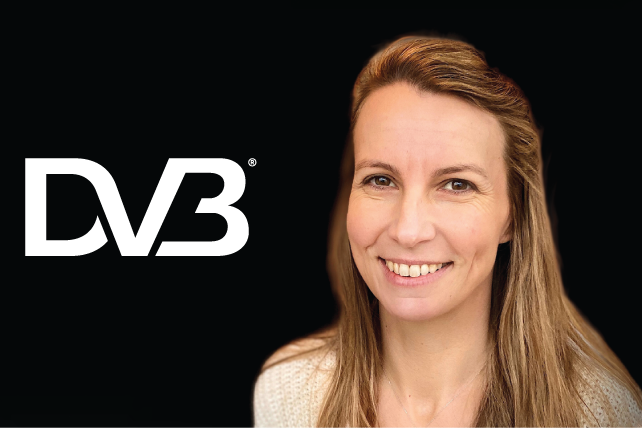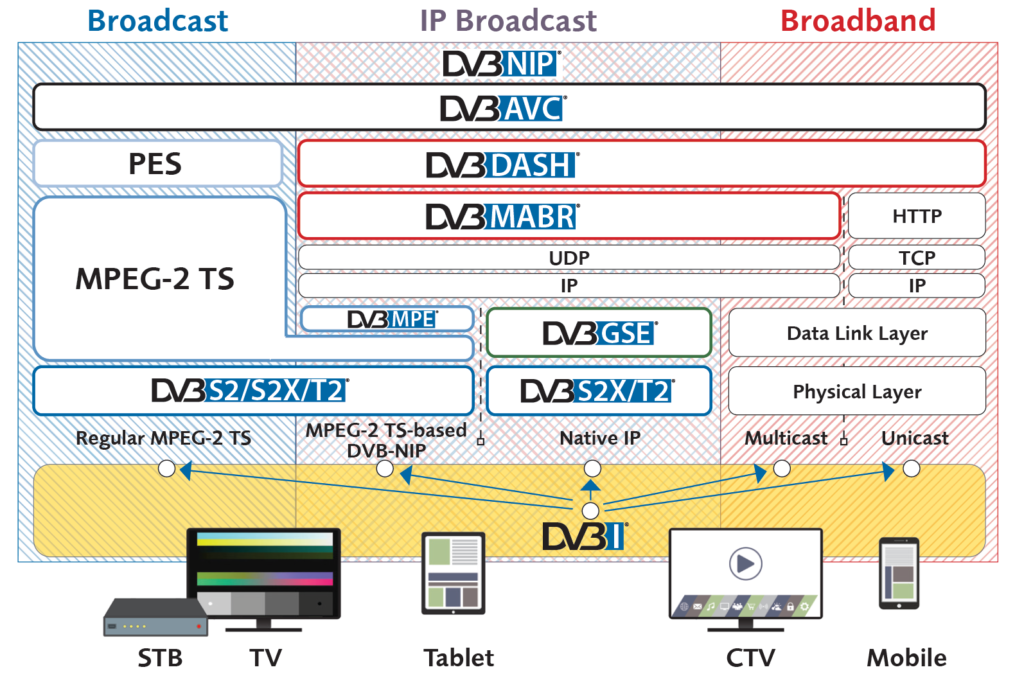
How will DVB’s latest generation of solutions drive future media delivery?
Emily Dubs (Head of Technology, DVB Project)
DVB’s overarching objective remains to provide solutions for the media delivery industry to capitalize on new technologies and market opportunities. These solutions take the form of technical specifications that address diverse market needs while collectively offering pathways to a new media delivery paradigm based on open standards. So, what does this new paradigm look like and how do these specifications all fit together?
The key to an optimized modern media-delivery system is the smart harmonization of service and content metadata, acting as an abstraction layer between the services themselves and the networks. This means any type of service can be easily discoverable on any kind of device, no matter the delivery network being used.
With such an approach, users can access, in a seamless way and through unified interfaces, linear or non-linear services, service enhancements (such as higher resolutions or immersive audio experiences), specific audio tracks, or accessibility features matched to both the user’s needs and the capabilities of the device used. And operators can freely decide whether a service (or version of a service) is best delivered via broadcast, multicast or unicast, optimizing their network costs and capacity.
This new paradigm is built around the DVB-I service discovery specification, which is at the heart of DVB’s IP-centric ecosystem. Used in combination with other DVB specifications – DVB-DASH for low-latency streaming, DVB-MABR for multicast, DVB-NIP for IP-based broadcast delivery – DVB-I is a powerful tool for the media industry. It can unify traditional DVB networks and those using other technologies, including 5G and any future IP-based delivery system, allowing them to be used seamlessly and intelligently.
Transition to hybrid
Our vision is thus to enable a transition, for media delivery, to an IP-based or – more likely – a hybrid media delivery landscape. Here, broadcast is used to transmit mainstream content to large audiences across a wide footprint, while unicast technologies are used for interactivity and personalization as well as for enhancing core services. The same applies to future, massively data-hungry, virtual experiences – think metaverse – that will also need to rely on broadcast for mass delivery of core common elements since unicast infrastructure is already struggling to keep pace with the exponentially increasing data traffic.
By offering a powerful aggregation solution, thanks to DVB-I and its associated specifications, DVB’s new IP-centric ecosystem embraces broadband and mobile standards that, combined with the power of broadcast, can offer an ideal media delivery paradigm for all players.
Bridging broadcast and broadband
In the diagram below we see DVB-I (yellow area) underpinning a truly converged media-delivery ecosystem targeting the full range of end-user devices. DVB-NIP, for native-IP broadcasting, bridges broadcast and broadband delivery (as shown in the blue/red crosshatched area).

IP-based delivery is handled via broadcast, multicast and unicast networks, combined seamlessly with existing MPEG-2 Transport Stream-based broadcast networks. DVB’s audio and video coding specification (DVB-AVC) provides a further layer of interoperability, benefiting manufacturers, operators and end users alike.
A full key to the terms in the above diagram is available here.
This article first appeared in issue 59 of DVB Scene magazine.
